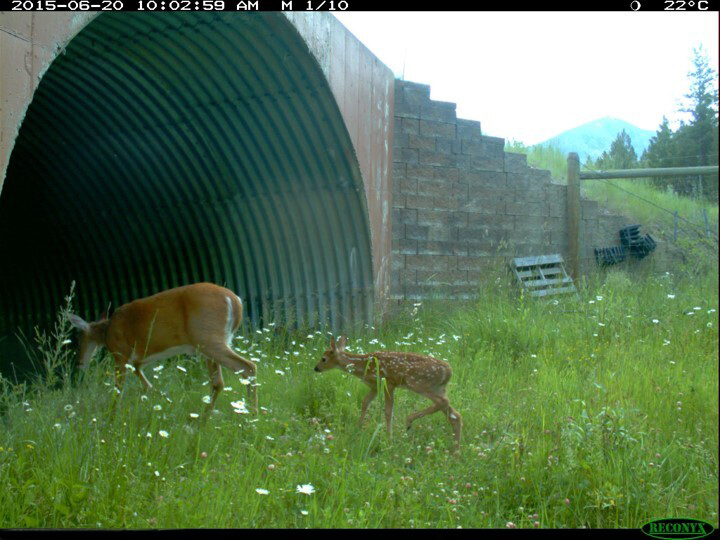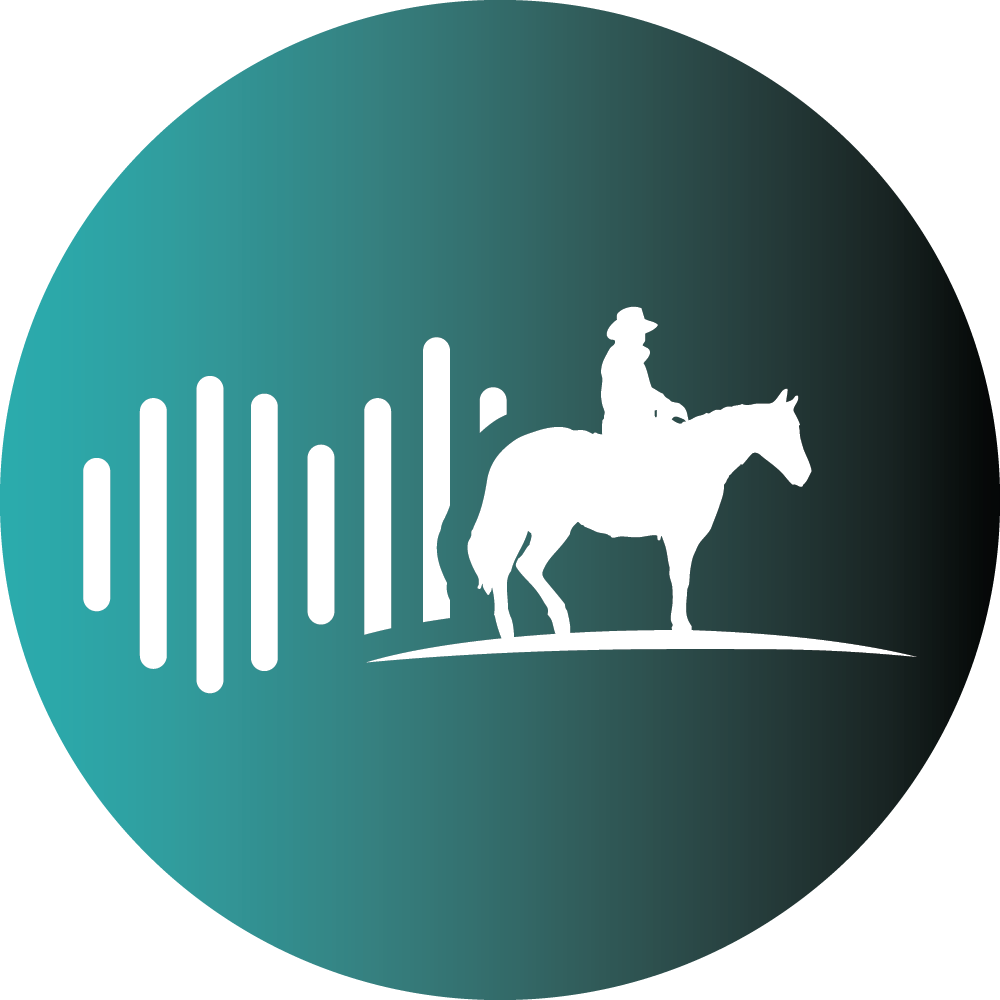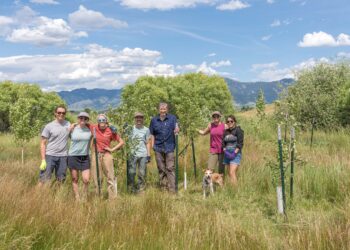CENTER FOR LARGE LANDSCAPE CONSERVATION
This article is the first in a planned three-part series on wildlife-vehicle conflict. Follow along with part two and part three.
A series of grainy camera trap images show a mother whitetail deer leading her fawn to the opening of a tunnel under a busy highway. She lies down and watches patiently as her fawn tentatively steps into the tunnel’s shadow, jumping away a few times before finally deciding to cross through. What is this sheltered pathway, and why is it here? The mother deer seems to know.
Wildlife crossings, like the highway underpass used by deer to cross beneath U.S. Highway 93 in Montana, represent an important way in which scientists are collaborating with communities and public agencies to address a growing and dangerous problem: wildlife-vehicle collisions.
Nationally, 200 people, one to two million large animals and countless smaller animals die every year in vehicle crashes with wildlife—which also lead to 26,000 human injuries—at an annual cost to society of more than $8 billion. The average cost of a collision is $14,000 for a deer and $45,000 for an elk in personal injury and property damage alone.
Not surprising given Montana’s abundant wildlife, State Farm Insurance consistently ranks the state as second in the nation for risk of collision with wildlife. According to the Montana Department of Transportation, maintenance crews collect more than 6,000 wildlife carcasses and the Montana Highway Patrol responds to an average of 3,200 wildlife-vehicle collisions each year.
For those who regularly travel U.S. highway 191 anywhere between Bozeman and West Yellowstone, if it seems like this stretch of highway sees even more than its fair share of crashes, that’s because it does.
A 2020 MDT Corridor Study of U.S. Highway 191 from Four Corners to Beaver Creek found 24% of all crashes are due to collisions with wildlife—more than double the statewide average of 10%, and nearly five times the national average of 5%.
A booming economy and explosive population growth in the Gallatin Valley have led to an unprecedented increase in regional traffic. Here in the northern part of the Greater Yellowstone Ecosystem, home to the greatest concentration of wildlife in the lower 48, the growing numbers of residents, visitors and commuters have given rise to a jump in conflicts with wildlife on the busy U.S. Highway 191 corridor.
Scientists like road ecologist Liz Fairbank, who studies the effects of U.S. Highway 191 and other roads on wildlife and nature at the Bozeman-based Center for Large Landscape Conservation, collect and analyze data on wildlife-vehicle collisions.
“When we combine crash and carcass data from public agencies and citizen science efforts and plot them on maps, a picture emerges of key areas with elevated collision risk,” said Fairbank, “but fortunately, wildlife-vehicle collisions are a problem with a proven solution.”
Depending on topography and an area’s suitability as long-term habitat, some of these collision “hot spots” might be prime candidates for crossing structures to provide safe passage for wildlife and motorists. Properly sited and designed wildlife crossings—underpasses, overpasses or culverts in combination with fencing—are typically 80% or more effective in reducing collisions with wildlife.
Unfortunately, comparatively inexpensive options like reduced speed limits are generally ineffective. Studies show that even electronic warning signs for drivers have a limited and diminishing impact over time.
“By far the most effective ways to reduce wildlife-vehicle collisions are measures that physically separate wildlife from the road,” explains Fairbank, who co-authored the U.S. Highway 191/MT-64 Wildlife & Transportation Assessment published by CLLC and Montana State University’s Western Transportation Institute last fall. “That generally means overpasses or underpasses accompanied by fencing that funnels wildlife to safe road-crossing locations.”
If a crossing is properly located, planned and designed, it is not only effective at reducing crashes but also cost-effective.
This is the case on U.S. Highway 191 at Trappers Point, some 250 miles south of Big Sky, near Pinedale, Wyoming. Collisions between vehicles and pronghorn or mule deer on this stretch of highway used to cost the public around $500,000 annually. A series of underpasses and overpasses with fencing led to an 81% drop in wildlife-vehicle collisions, and the complete elimination of pronghorn-vehicle collisions, based on three years of post-construction monitoring. Given the previous cost of collisions, the crossings are expected to pay for themselves in around 17 years—far ahead of the end of their 75-year lifespan.
Many are hoping a similar success story is possible for U.S. Highway 191 in the vicinity of Gallatin Canyon. Several efforts over the past four years, including public and private research along the corridor between Four Corners and West Yellowstone, and new state and federal government funding mechanisms, have created the potential for future opportunities to protect driver and wildlife safety in the coming years.
Individuals interested in the findings of the US-191 Wildlife & Transportation Assessment and updates on the topic can learn more at largelandscapes.org/191.














